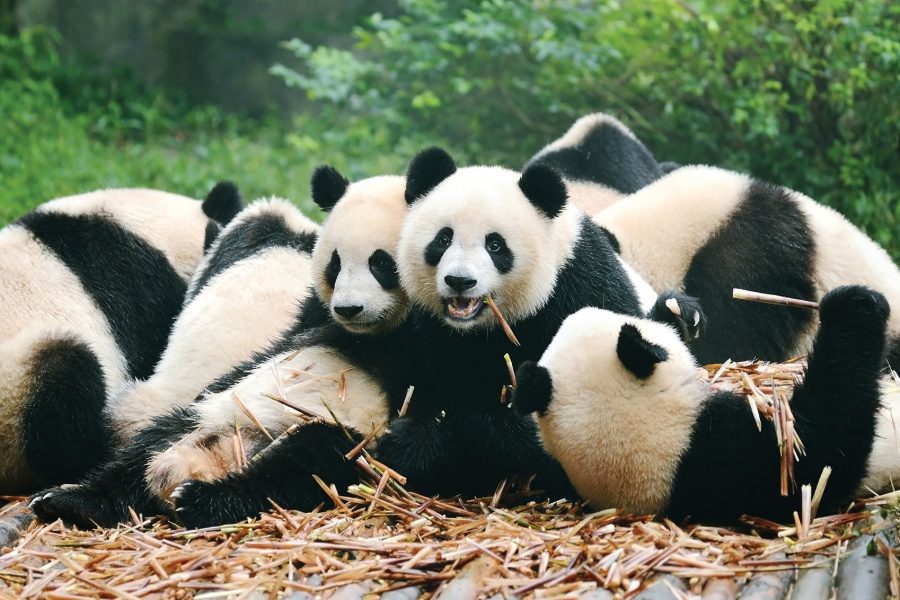Black. White. Peeping through columns of green bamboo. It’s like a scene from a Chinese ink painting. Except it isn’t just classical art: the giant panda has an extraordinary ability to charm, and there’s nowhere better to be charmed than Chengdu: the “land of abundance” and home of the giant panda.
The gift of two five-year-old pandas, not to mention the arrival of the first baby pandas ever to be born in the city, saw panda fever kick into overdrive in Hong Kong earlier this year. Before they were unveiled to the public at Ocean Park Hong Kong, I made a pilgrimage to the homeland of these gentle giants.
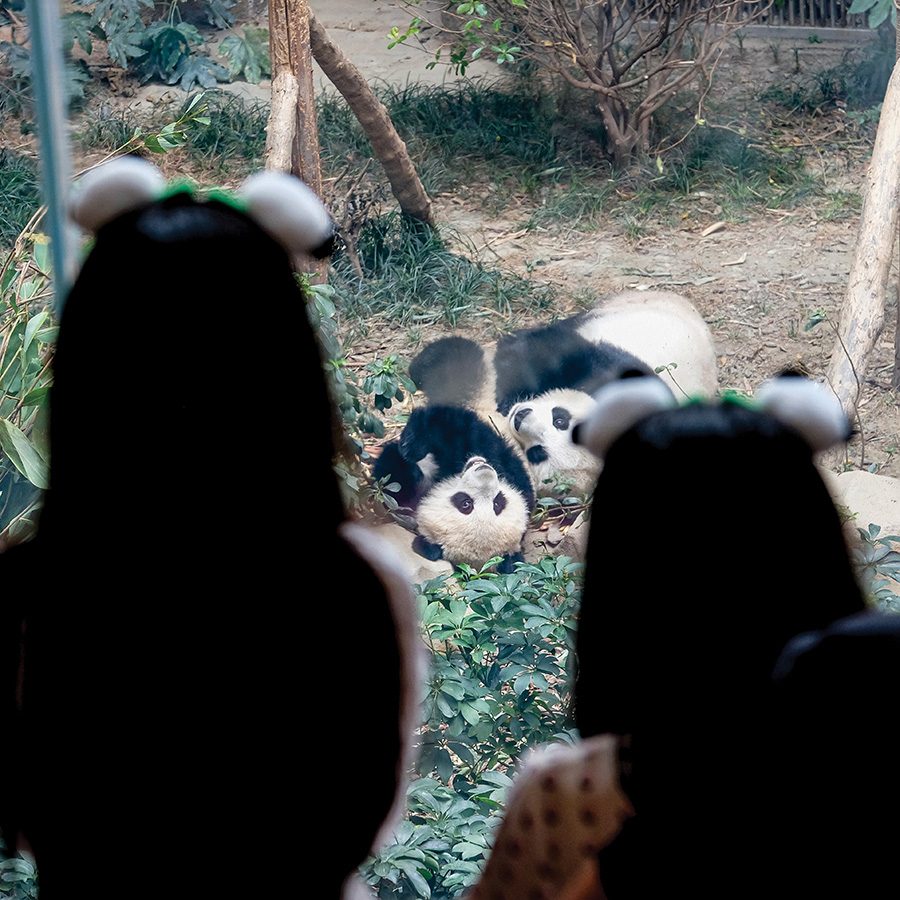
Credit: Wylie Liu
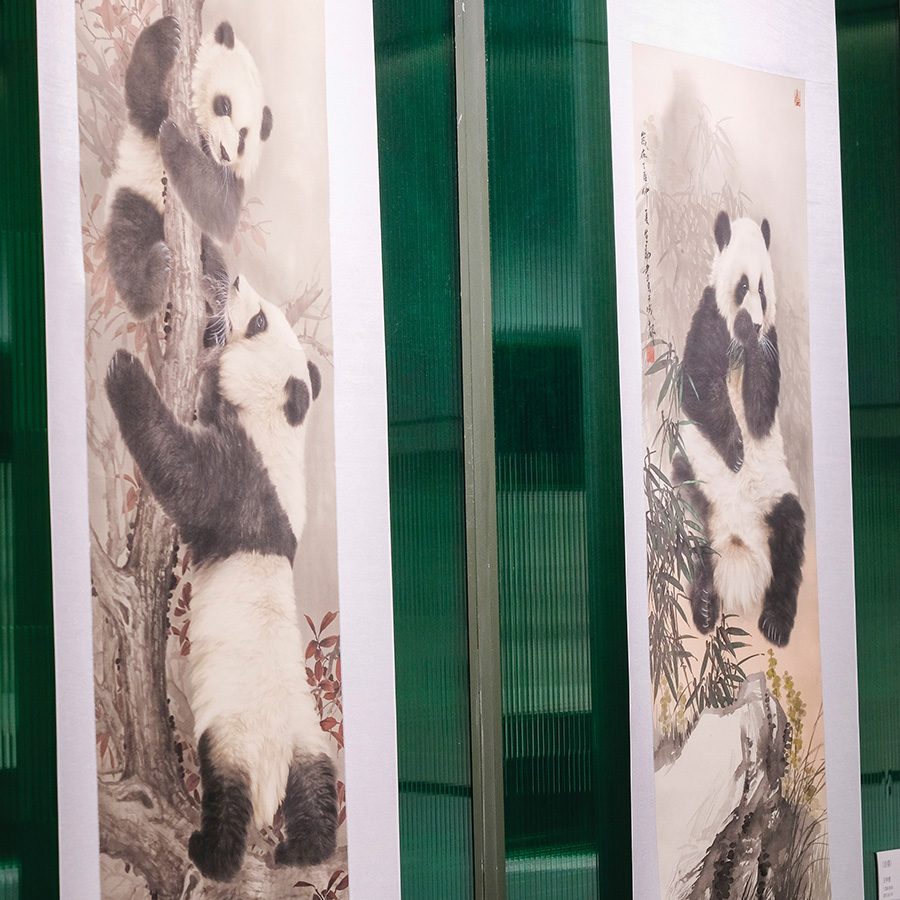
Credit: Wylie Liu
Base exploration
Yun Wu the panda sits unbothered by the crowd behind him, a meditative presence that inspires silent observation. “That panda is contemplating life,” a fellow visitor whispers. This is the Chengdu Research Base of Giant Panda Breeding, a sanctuary of bamboo groves established in 1987 that houses the world’s largest captive population of pandas. On this hot, sticky day, most remain in their cooler villas where they stretch and roll without a care. Yun Wu appears indifferent to the weather and the crowds alike.
The Chengdu research base boasts a bamboo-shaped observation tower, an art gallery, a panda post office and red panda facilities. I find myself most taken by the nurseries, however: within the glass walls of the Star Giant Panda Nursery House, I watch a mother panda play with her cub. The pair climb, chase and wrestle, the younger learning survival skills with a delightful clumsiness. When human caregivers arrive with a lunch of bamboo, the cubs cling to them. The bond between keepers and pandas feels familial, and I find their mutual trust deeply moving.
Giant pandas are native to central and western China, their habitat spanning the Sichuan Basin, where most of them live, and parts of Shaanxi and Gansu provinces. They number just 2,600 – a quarter of which are in captivity – putting them in the “vulnerable” category on the International Union for Conservation of Nature’s Red List of Threatened Species.
Not that you’d know it in Chengdu. Panda likenesses appear everywhere – from 3D animations on large screens to art installations, merchandise and shop decorations. When I arrive, their ubiquity initially makes me wonder if I might risk suffering “panda fatigue”, but this feeling fades as I undergo my transformation into an unreserved panda-thusiast.
Acts of love
An hour’s drive northwest from Chengdu, I arrive at another facility: the Giant Panda Dujiangyan Base – free to enter for Hong Kong ID holders. It’s easy to find and tour solo, but one of the advantages of staying at Upper House Chengdu was being set up with a tour guide Qing Yun, representing travel agency Le Tour Panda, who meets me at the base and helps me navigate the large park and its facilities.
I’m here to experience life as a keeper and learn more about the pandas’ daily routines. We arrive in the morning and change into uniforms before heading to the panda living quarters to watch feeding time.
Up close, I notice how their black eye patches aren’t one solid colour and how expressive they sound when they’re eating. “They’re habitual grazers, consuming up to 20kg daily,” our guide, surnamed Chen, explains.
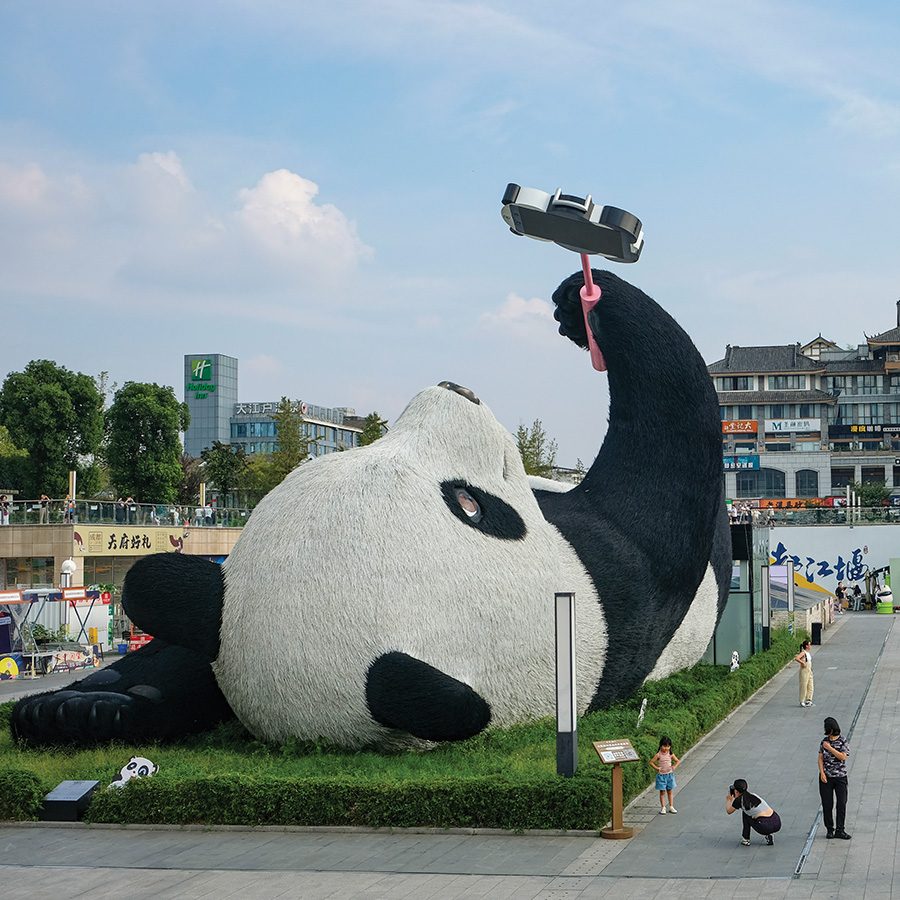
Credit: Wylie Liu
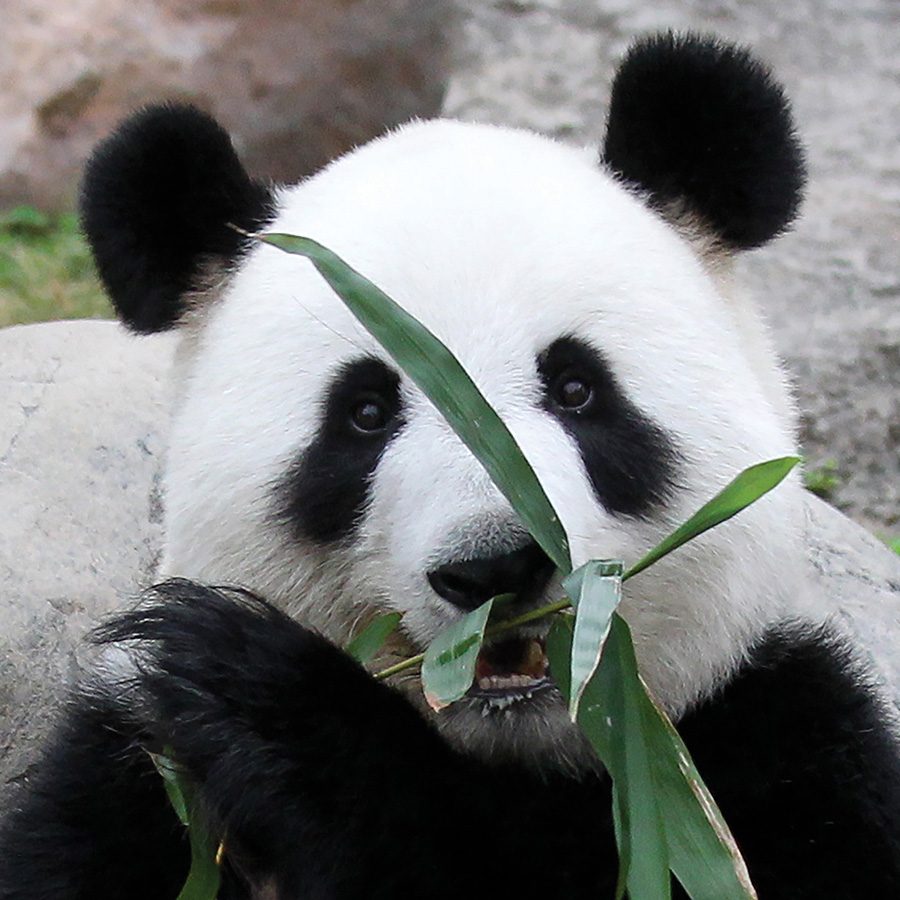
Credit: South China Morning Post/Getty Images
Bamboo constitutes pandas’ primary source of nutrition, and so our next task involves breaking bamboo into smaller pieces. Quality control is essential: “Any blackened bamboo is discarded immediately – pandas are selective eaters and won’t touch spoiled food,” Chen says.
Dujiangyan is farther outside Chengdu than the research base, so it feels more peaceful and leisurely. After cleaning up, I explore the grounds. A nearby branch sways as a chubby cub climbs to the treetop. Observing its carefree nature, Qing Yun remarks: “They embody the Sichuan character – it’s all about enjoying a relaxed, unhurried life.�”
We aspiring keepers have one final task: preparing wowotou, or nutrient balls. Made with bamboo leaves, soybeans and corn, these are a delicious and nutritious snack.
I chat with Eloisa, an Italian tourist, who’s seen pandas in European facilities but never had the chance to get this close before now. She says, “The immersive experience here is uniquely different.”
Volunteering certificate proudly in hand, it’s time to head back to Chengdu. But not before stopping by Yangtianwo Square in search of Dutch artist Florentijn Hofman’s 27-metre-long Selfie Panda statue. In repose, content: it perfectly encapsulates the energy of the real thing.
Qing Yun’s words from earlier that day come back to me: “Being a panda means resting at will, eating on schedule and being universally adored.” Life as a panda in the land of abundance is indeed blessed.
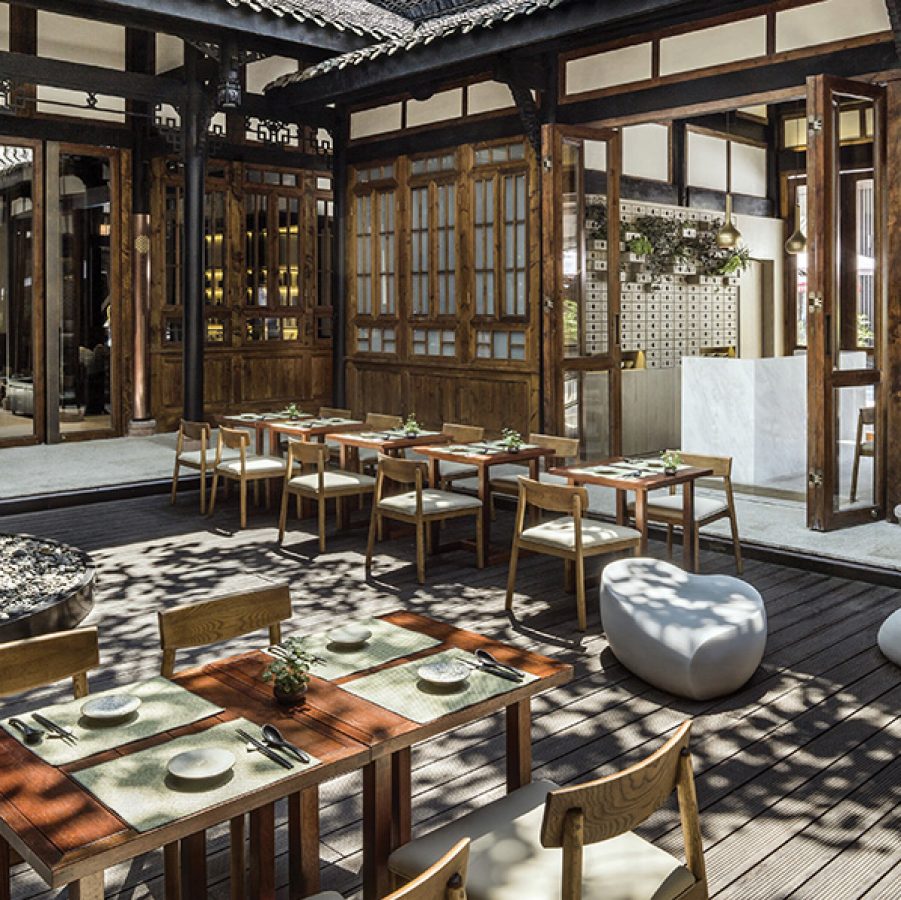
Into the panda-verse: build your themed itinerary in Chengdu
Eat
Mi Xun Teahouse , a one-Michelin-starred plant- based restaurant – also a Green Star recipient – serves a farm-to-table set menu created in collaboration with the World Wildlife Fund for Nature. Using ingredients sourced from the communities around giant panda habitats, dishes include bamboo shoot and tomato rolls, and termite mushroom oil-braised mapo tofu.
Snap
I Am Here , a 15-metre-tall geometric panda sculpture, designed by US installation artist Lawrence Argent, adorns the exterior of the International Finance Square on Chunxi Road. View it from street level or photograph its head from the building’s rooftop.
Shop
In the upscale Taikoo Li shopping centre , many stores sell panda merchandise. Fangsuo Commune bookstore and Momicafe gift shop offer postcards and colourful accessories. Don’t miss the Lego pandas at the toymaker’s flagship.
Chill
Located on the effortlessly cool Tangba Street, Stackway Panda Bookstore stocks panda books and products and even serves panda-shaped desserts in its in-store café.
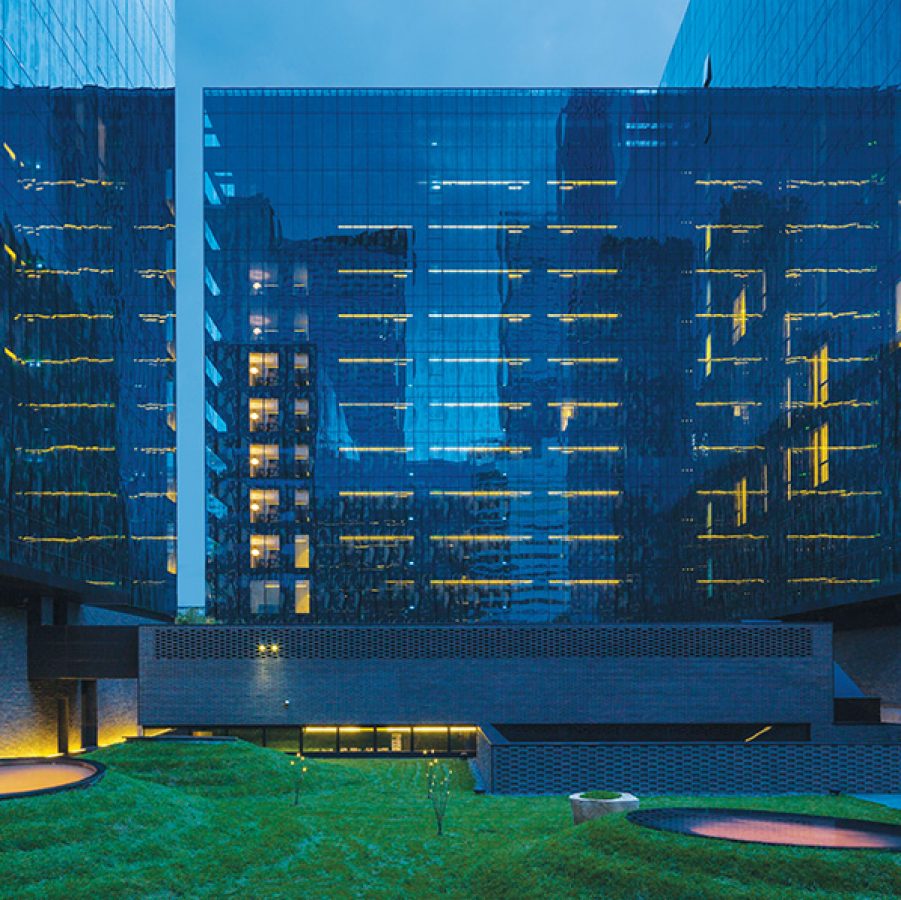
Stay here
The Upper House Chengdu , situated in the fashionable Taikoo Li district, forms part of a conservation project built around the Daci Temple and its surrounding heritage buildings.
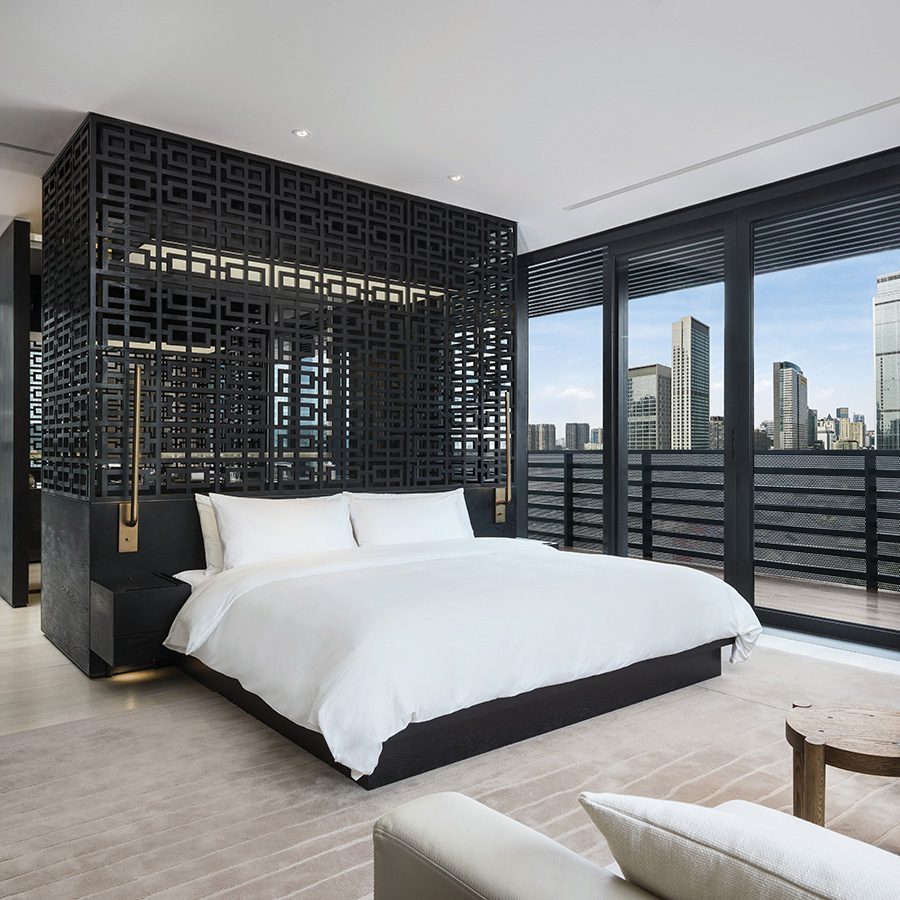

This perfectly poised urban sanctuary preserves a Qing Dynasty courtyard and employs a traditional Zen design embellished with luxurious details. Rooms and suites feature elegant decor and spacious comfort, with some offering expansive terraces that overlook the hotel’s historic neighbourhood.
An exceptional selection of dining and drinking venues includes Tivano Italian Restaurant, The Temple Café, Mi Xun Teahouse and Jing Bar. There’s also an indoor pool, fitness centre and the award-winning Mi Xun Spa for guests to enjoy.
More inspiration
Chengdu travel information
- China – the Chinese Mainland, Hong Kong SAR, Macao SAR and Taiwan Region
- Hong Kong SAR - English
- Chinese Mainland (China) - English
- Taiwan, China - English
- 香港特別行政區 - 繁體中文
- 中国內地 - 简体中文
- 中國台灣 - 繁體中文
- Africa
- South Africa - English
- Asia
- Bangladesh - English
- Korea - English
- Singapore - English
- Cambodia - English
- 한국 - 한국어
- Sri Lanka - English
- India - English
- Malaysia - English
- Thailand - English
- Indonesia - English
- Maldives - English
- ประเทศไทย - ภาษาไทย
- Indonesia - Bahasa Indonesia
- Myanmar - English
- Vietnam - English
- Japan - English
- Nepal - English
- Việt Nam - tiếng Việt
- 日本 - 日本語
- Philippines - English
- Australasia
- Australia - English
- New Zealand - English
